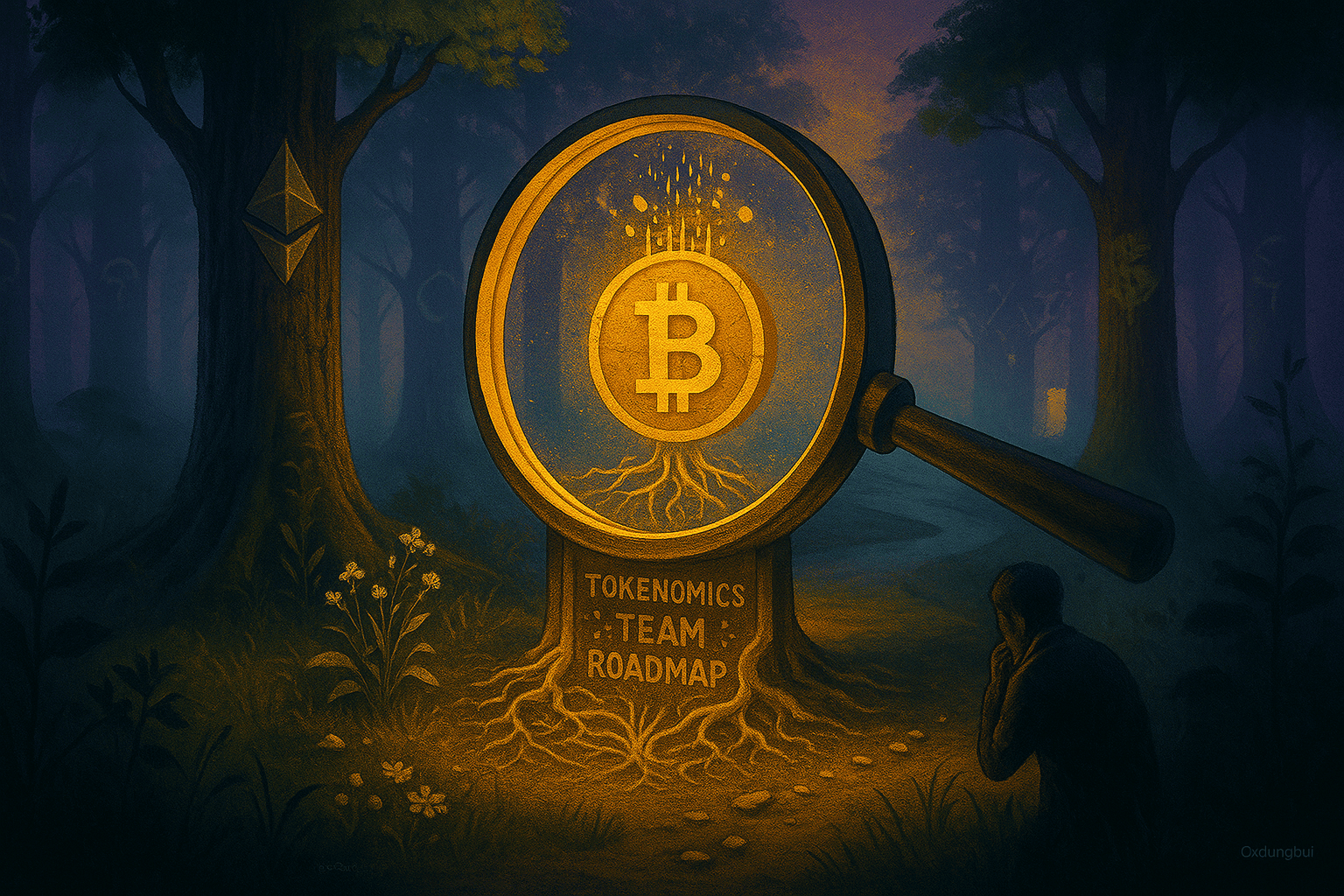
DYOR – perhaps the most repeated phrase in the crypto market.
Slogan.
Amulet.
Escape route.
It's so popular that it has become a perfect catchphrase,
helping investors evade responsibility whenever the market crashes.
But actually...
How many people really do this?
---
Imagine you walk into a large bookstore.
In front of you are hundreds of different books.
Which one will you choose?
Most people will:
– pick a bestseller,
– trust friends' words,
– or choose based on a nice cover.
Very few truly:
– flip a few pages,
– give it a read,
– and self-evaluate the content inside.
Investing in crypto is the same.
People don’t research.
They chase trends.
They believe in KOLs.
They choose what sounds “okay.”
But...
very few people understand what they hold.
---
The most dangerous thing
is not researching.
But it's thinking that you’ve researched.
DYOR is not:
– Google the founder's name,
– skim the whitepaper,
– read a few tweets then FOMO.
DYOR is a vital skill.
And like any other skill —
you need to practice.
---
So... how to truly “DYOR”?
1. Understand the ecosystem
Imagine the crypto market as a forest.
Bitcoin and Ethereum are ancient trees.
Their roots are deep.
Hard to shake.
Smaller tokens?
Like wildflowers.
Beautiful but fragile.
Easily swept away when the monsoon winds blow.
DYOR starts with identifying the project's position in the forest.
A hot token,
but belongs to a low liquidity ecosystem —
like trying to build a house on muddy ground.
No matter how beautiful the house is,
a weak foundation
will still make it collapse.
2. Dissect tokenomics
Tokenomics is the circulatory system.
If the blood circulates well – the project lives.
If the blood flows to a small group – the project dies slowly.
Be careful with:
– teams holding most of the tokens,
– unclear vesting schedules,
– supply inflating too quickly.
Remember the slide of ICP:
Expectations of technology,
Token too centralized,
Community lost trust.
3. Look at the team
The team is the crew.
And the project is the ship.
A beautiful ship,
great technology,
but a bad crew → sunk.
You don’t need to be technically skilled.
Just look:
– Are they consistent with the roadmap?
– Are they transparent with the community?
– How do they react when facing failure?
If there are signs of evasion,
avoiding responsibility,
or lacking presence —
withdraw.
4. Ask industry questions
– Is this project necessary in the industry?
– Does it solve a problem that no one has solved yet?
– If it were gone, would the industry lose anything?
Many projects are just a trend of changing wrappers,
like opening a milk tea shop because everyone else is.
But the trend will pass.
The true value stays.
5. Find the “it factor”
Unique point.
The factor that makes you nod and say:
“There’s something about this.”
If you feel nothing,
if both the website and the community are bland,
if the project doesn’t make you want to learn more…
Then don’t invest.
It’s like a movie trailer:
If the trailer isn’t appealing,
are you sure the movie is worth your time?
---
DYOR is not just “checking for the sake of it.”
It is an attitude.
A habit.
A defensive reflex in a chaotic market.
Lucky winners can win a few times.
Those with a mindset will win in the long run.
DYOR is not a cliché.
Certainly not an amulet to avoid responsibility.
It is the armor of a vigilant investor.
The most important question
is not:
“Who should I trust?”
That is:
“Have I really understood what I am investing in?”
Only when you can answer clearly,
can you confidently step into the market.



